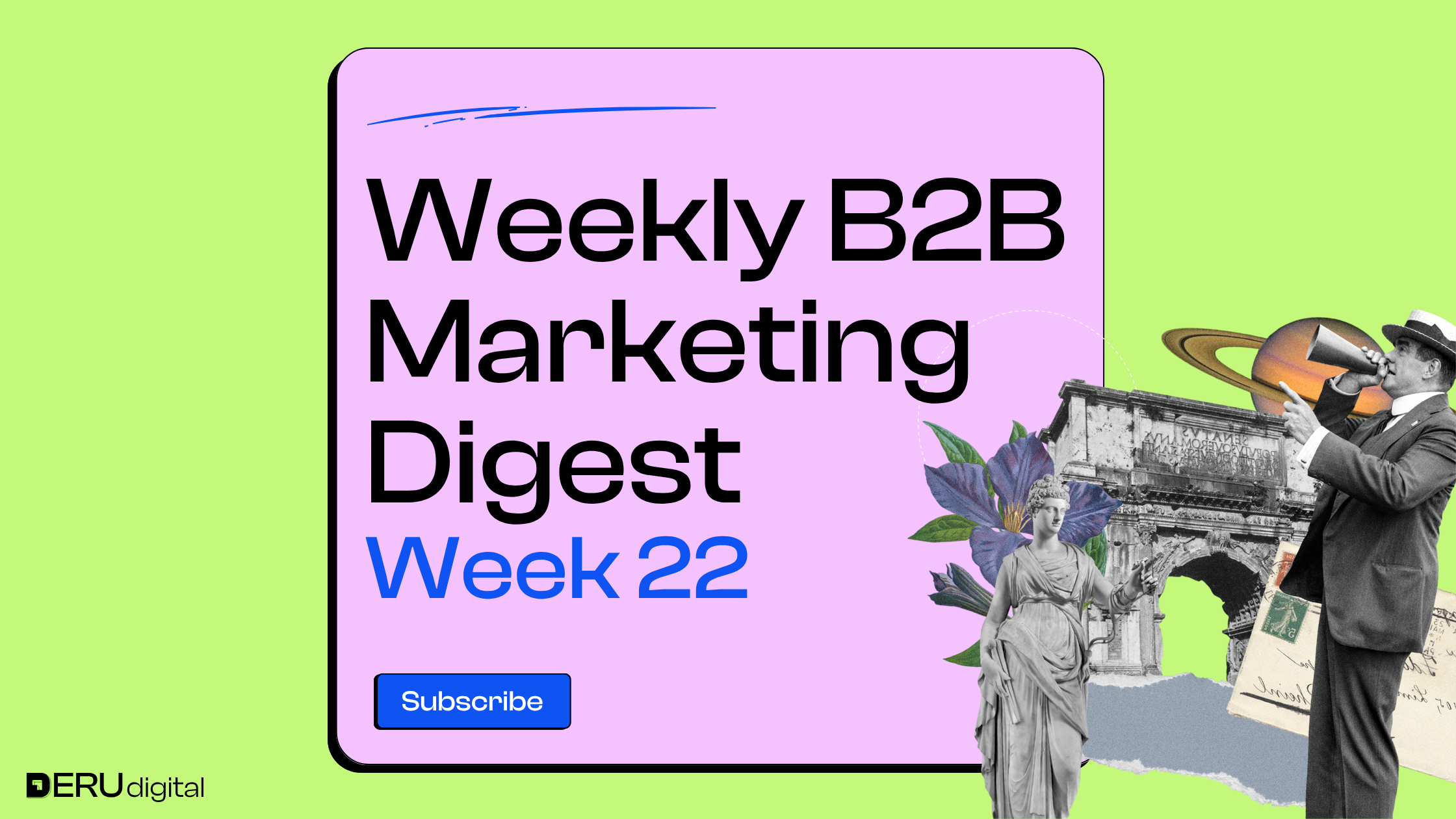

INSIGHTS FROM EXPERTS ON LINKEDIN
Justyna Ciecierska, MSc explains that some products solve problems people don’t even realize exist, so you need to tie your product to a bigger goal they care about. Instead of waiting for them to search, show up early, help them with the steps they’re already taking, then introduce your product as the best solution. This way, when the problem becomes real, your brand will be top of mind.
Vladimir Blagojević breaks down how B2B marketing teams are stuck in a hamster wheel – pressured for short-term results, blocked from strategic work, and not given the resources or trust they need. He calls for a shift: invest in marketing as a strategic function, fix the GTM fundamentals, and stop treating CMOs like Swiss Army knives. If you want real pipeline, you need a real plan.

Brendan Hufford shares 5 big shifts content teams need to make, like building brand first (not through content), standing for something clear, addressing buyer skepticism, and telling the story of tough decisions behind the scenes. He says most B2B content is stuck in the past – too polished, too vague, and too focused on engagement instead of trust. If you want to resonate in 2025, you need to rethink your playbook.
Peter Buckley shares new data showing that the world’s strongest brands have nearly doubled their advantage over the S&P 500 since 2016. With AI shifting search away from keywords and backlinks, brands that get mentioned the most are rising to the top. Being meaningful, different, and top-of-mind is what keeps brands winning today, and it’s only getting more critical.

Finn Thormeier explains how Amos Bar-Joseph scaled Swan AI by building a bold narrative on LinkedIn – no ads, no SEO, just 1.5M impressions a month. Amos focused on the idea of “The Autonomous Business,” created deep, thoughtful content around it, and used AI to turn likes and comments into qualified leads. It’s a playbook for how to build a business by making people believe in a bigger idea.
Steffen Hedebrandt introduces AI Signals, a new Dreamdata feature that cuts through noisy data to spot hidden buying intent tied to real pipeline and revenue. It alerts sales teams, syncs audiences for marketing, and shows what’s actually driving growth. A simple way to act fast on the signals that matter most.
Liam Moroney argues that brand measurement needs to reflect how buyers really buy, not just what’s easy to track. Too many dashboards get packed with metrics that look impressive but don’t help make good decisions. Keeping brand reporting clear, simple, and focused on the big picture helps teams actually understand how growth happens.

Peep Laja shares that 63% of B2B execs start vendor research by asking their network, not Google or ads, up from 58% last year. Most buyers are having private conversations you can’t see, and brands that tap into this hidden network are closing deals faster, with higher conversion rates and bigger deal sizes. If you want to win, help prospects connect with customers they already know and trust.
Gwen Lafage 🐝 explains that most buying decisions come down to referrals and recognition, not capabilities. Buyers make their list based on recommendations and brands they already know, then pick the one that feels right. If your brand isn’t in that first list, you’re out of the game before it even starts.
WHAT'S NEW IN THE INDUSTRY
New research shows that while 75% of GenAI buyers recall seeing GenAI ads recently, nearly two-thirds say they’re irrelevant. Most ads repeat vague hype, resonating only with existing fans and failing to address practical business needs. The takeaway for marketers: focus less on selling the future of AI and more on solving real problems today.

Google has updated its GTM conversion tag, making it easier to configure user-provided data for Enhanced Conversions with a new sitewide tag-level setting. This change aims to improve accuracy in matching conversions by using hashed first-party data like email addresses. Advertisers should update their tags to manage data more efficiently within GTM.


YouTube Insights Finder, a tool that helps advertisers spot trends and audience interests, is now live in over 20 countries. The tool offers detailed metrics on trending topics, top creators, and engagement patterns across devices. This expansion lets marketers tailor campaigns to what’s capturing attention on YouTube right now.
Nearly two-thirds of businesses report that email deliverability issues are hurting revenue and customer retention, according to Kickbox. Spam filtering is the biggest barrier, yet only a quarter of brands verify email lists before every campaign, risking high bounce rates and fake leads. Businesses are spending big on email marketing but missing out by not focusing enough on inbox placement and list hygiene.

Google has started rolling out AI Max, a new keywordless targeting feature for Search campaigns that promises smarter automation and more precise audience targeting. The tool is designed to help advertisers optimize campaigns with AI-driven bidding and targeting, potentially driving better performance. Advertisers are encouraged to check their accounts for early access as the global rollout is expected to complete by early Q3.
Google is rolling out channel performance reporting for Performance Max campaigns, offering insights into how ads perform across Search, Display, YouTube, and other networks. This long-awaited feature helps advertisers spot underperforming channels, optimize creative, and refine budget allocation based on real data. While still in beta, this transparency marks a significant step toward better campaign optimization in PMax.

That’s the scoop for this week! If you found this valuable and any useful insights caught your eye, feel free to share them with your network.
Until next week!



